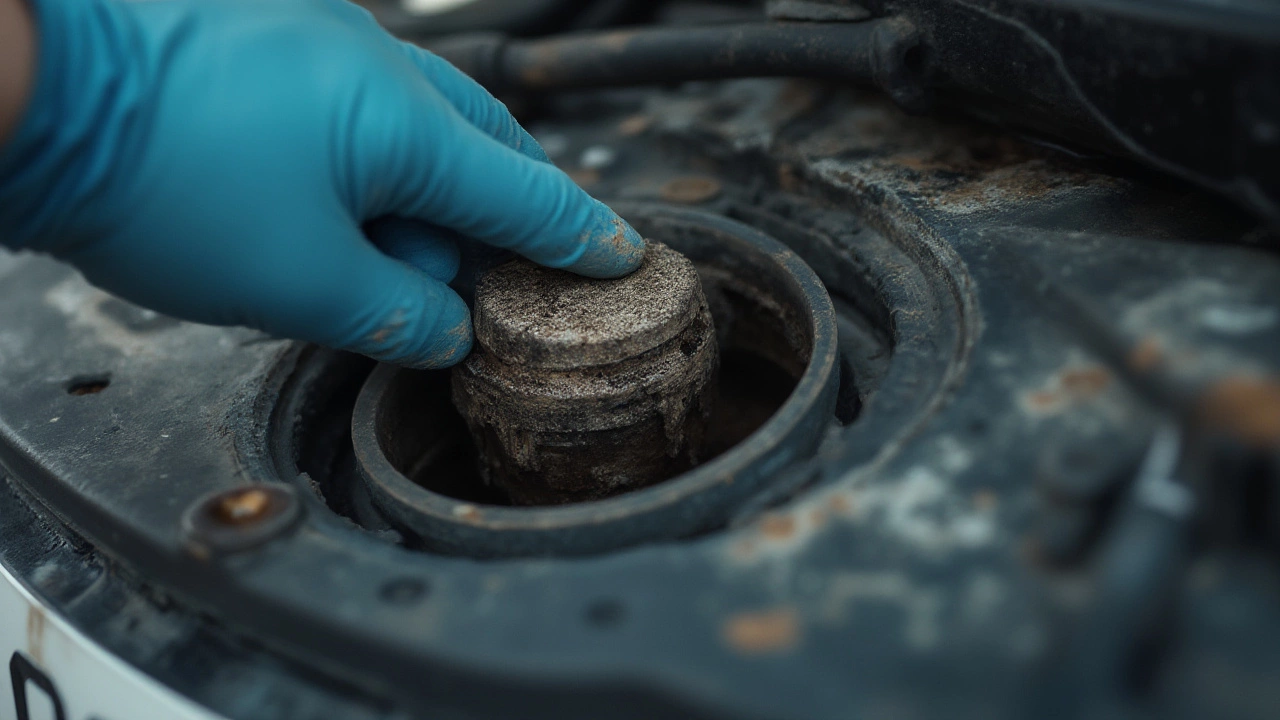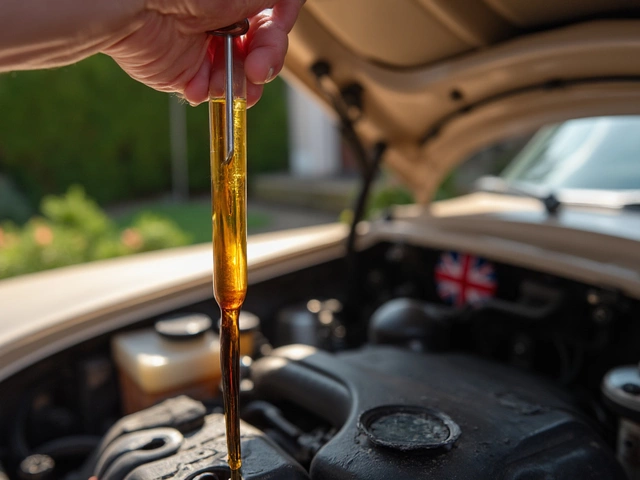Pop the hood on a regular car and you might not notice much at first—just some wires, parts, and probably a layer of dust. But hiding inside that engine is something a lot sneakier: dirty engine oil. This isn’t just an old myth mechanics tell to spook drivers into changing their oil sooner. Gunky, sludgy oil hurts your car way more than most folks imagine. Besides that, it’s pretty easy to overlook when things start going south beneath the hood. Want to save yourself from a blown engine (and some serious wallet pain)? Let’s dig into dirty engine oil, why it’s such a villain, and every single sign your ride is giving you that it’s time for a change.
Why Engine Oil Gets Dirty (and Why It Matters So Much)
Engine oil starts off bright amber—almost honey-like. But as it cycles through the engine, it’s grabbing all kinds of nasty bits: carbon from burned gas, tiny metal fragments from engine parts grinding, water vapor, dust, road grime, and even chemicals from the environment. That once-slick oil slowly transforms into something thick, dark, and gritty. Oil can lose its ability to lubricate smoothly or help cool the engine. Think of it like butter that’s been left on the counter too long and picks up crumbs—it stops doing its job well.
The U.S. Department of Energy actually found that regular oil changes can improve gas mileage by up to 2%. That doesn’t sound huge, but over a year it adds up, especially if you’re logging lots of miles. Gritty oil also makes your engine work harder, raising temperature and risking damage. Over time, dirty oil can cause the whole engine to seize—basically freezing up from the inside. No driver wants to hear their mechanic say "engine replacement" because of something as basic as oil.
A typical car should have its oil changed every 3,000 to 7,500 miles, depending on what and how you drive. Short trips, dusty roads, or stop-and-go traffic speed up oil breakdown. And that advice you heard about waiting until oil looks dark on the dipstick? That’s a myth. Modern detergents in oil turn it dark super fast, and color isn’t always a clue.
The Classic Signs Your Engine Oil Is Dirty
Do you really need to get your hands dirty to spot signs of dirty oil? Not always. Your car might give away hints long before you get out the dipstick. Here’s what to watch for.
- Engine noise gets louder: Crisp purring turns into a clattering, knocking, or ticking as metal parts run with less protection. If your car sounds like a sewing machine in distress, check the oil.
- Warning lights on your dashboard: The "Check Engine" or oil can light might flicker, sometimes coming on and then off again. Don’t ignore these—they’re the car’s cry for help.
- Poor acceleration: The gas pedal just feels mushier. Dirty oil prevents parts from moving freely, plus a sluggish engine burns more fuel, hurting your pocket at the pump.
- Smoke or exhaust changes: White or bluish smoke coming out the tailpipe can mean oil isn’t doing its job, either leaking or burning off. Modern cars are clean, so smoke almost always means trouble.
- Smell of burning oil: If you ever get a whiff of something sharp, smoky, or burning inside or near the engine bay, there’s probably oil leaking onto hot parts.
- Dirty oil on the dipstick: When you do finally check, the oil is super dark, gritty between your fingertips, or leaves a sticky film on the stick.
| Dirty Oil Symptom | Possible Cause | Result |
|---|---|---|
| Loud engine noise | Loss of lubrication | Metal-on-metal wear |
| Dashboard warning lights | Low oil pressure or quality | Potential engine failure |
| Poor acceleration | Friction slowing parts | Less power, higher gas use |
| Smoke from exhaust | Oil burn-off or leaks | Possible damage to emissions system |
| Burning oil smell | Leaking onto hot engine | Risk of engine fire |
Now, here’s a wild stat: According to CarMD, nearly one in every five car breakdowns on the highway are the direct result of failed lubrication or bad oil. That’s a lot of avoidable roadside headaches.

Risks You’re Taking with Dirty Oil
Driving with dirty oil is like running a marathon in sandpaper socks. The engine has to work harder for every mile, which means it runs hotter, wears out parts faster, and uses more gas. Ignoring routine oil changes just doesn’t work—especially when newer engines are built with tighter tolerances than ever.
What really happens if you ignore those dirty oil symptoms? It starts with wear on engine bearings—the soft metal pieces that allow moving parts to spin smoothly. Then gunk builds up in oil passages, starving the tightest spots of oil. After that, you could face stuck valves, fried piston rings, or even a thrown rod (that’s when engine parts literally burst out of the engine block).
Even turbocharged engines, which are popular now for both speed and fuel economy, rely on super-thin, clean oil. Gummy oil cooks even faster in turbos, leading to turbo failure, which costs thousands to fix. And those with modern "variable valve timing" setups? These use tiny oil passages and actuators that clog quickly when the oil isn’t fresh.
Dirty oil even messes with your emissions system. Clogged catalytic converters (which can cost over a grand to replace) are often the final bill for long-neglected oil. Some automakers even void powertrain warranties if you can’t show receipts for timely oil changes.
How to Check Your Oil and Keep it Clean
Alright, maybe you haven’t changed your oil in a bit—or you bought a used car and aren’t sure when it was last done. Here’s the good news: with a few minutes and a rag, you can get a good idea of your oil’s health right at home.
- Pop the hood and locate the dipstick (usually marked in bright yellow or orange).
- Pull the dipstick, wipe it clean, reinsert fully, and pull it again.
- Check both the level and the color—brand new oil is amber or light brown, but even darker oil can be OK if it’s not gritty or sludgy.
- If the oil feels gritty, leaves gunk on your finger, or smells burned, it’s time to swap it out.
Modern cars sometimes have electronic sensors instead of old-school dipsticks. If that’s your ride, don’t skip oil change intervals just because the display shows "OK." Electronics can fail or be inaccurate.
For most drivers today, changing oil every 5,000 to 7,500 miles is safe with modern synthetic oils. But if you do mostly short trips, tow trailers, or live where it’s really hot or cold, stick to the lower end of that range. And don’t skimp on a new filter—old filters trap less crud, sending debris right back around the engine.
Keen on squeezing every ounce of life from your engine? Here’s a cheat sheet of quick tips:
- Keep a logbook or phone reminder for oil changes—don’t trust memory alone.
- Buy oil from reputable brands—cheap oil breaks down faster and doesn’t clean as well.
- If you spot leaks under your car, don’t ignore them; even a slow leak means oil isn’t circulating properly.
- If you drive in crazy weather or dusty areas, check oil more often; dirt gets in fast, especially with cracked gaskets or a bad air filter.
- Always replace the oil filter with every oil change. It’s like washing with dirty water if you don’t.
Here’s the bottom line: dirty engine oil is more than just a cosmetic problem—it’s an engine killer in disguise. Learn your car’s warning signs, get your hands a little messy, and stay ahead of costly repairs. Your car (and probably your bank account) will thank you every mile down the road.




